Marantz PMD340, PMD331, PMD330 User Manual
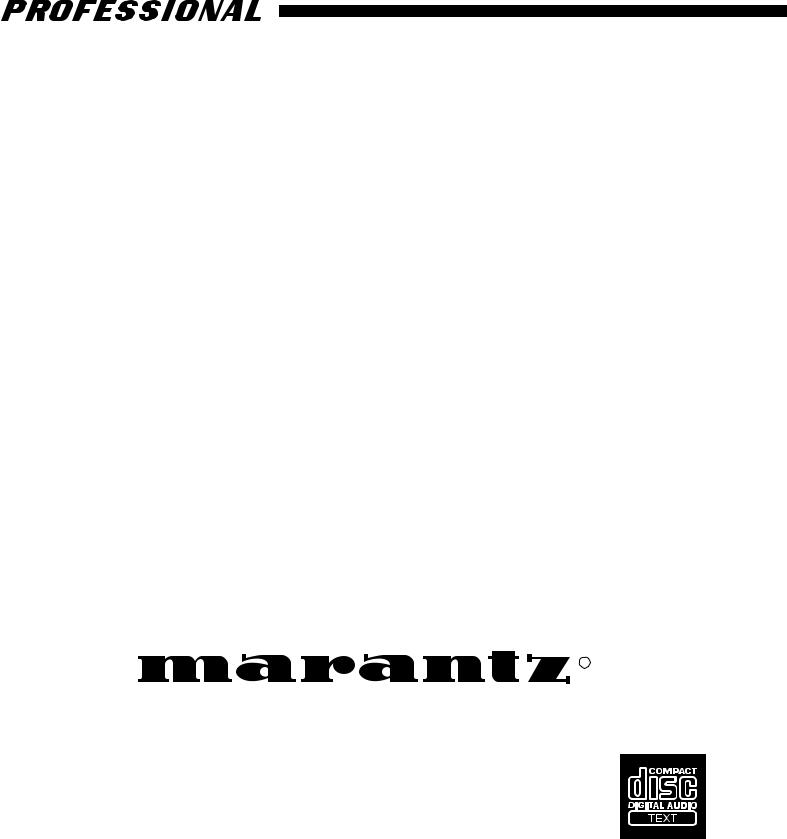
Model PMD330/PMD331/PMD340 User Guide
Compact Disc Player
R
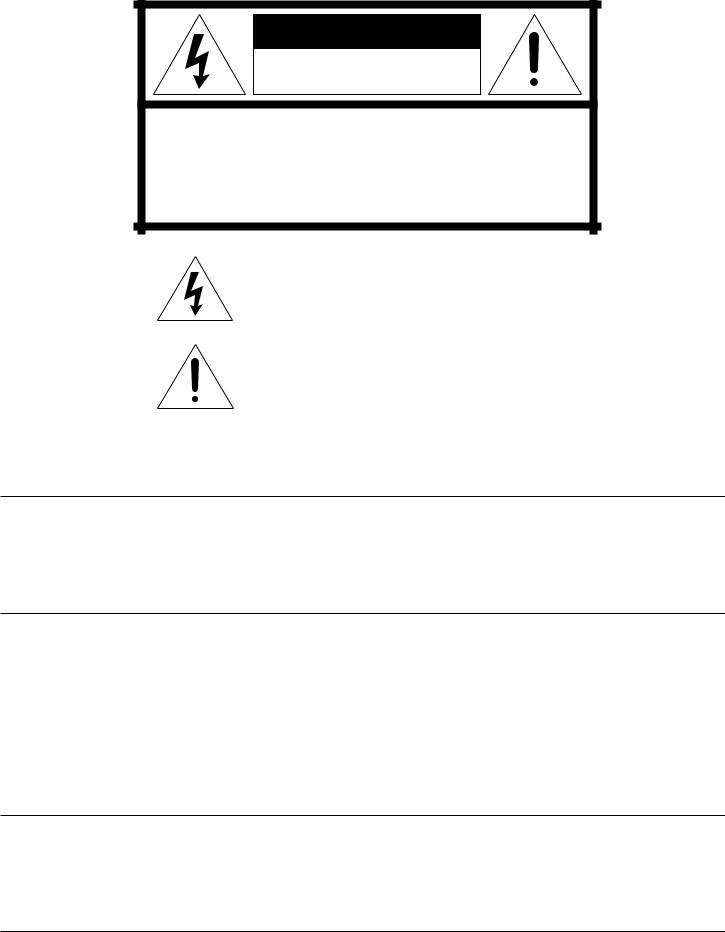
CAUTION
RISK OF ELECTRIC SHOCK
DO NOT OPEN
CAUTION: TO REDUCE THE RISK OF ELECTRIC SHOCK,
DO NOT REMOVE COVER (OR BACK).
NO USER-SERVICEABLE PARTS INSIDE.
REFER SERVICING TO QUALIFIED SERVICE PERSONNEL.
The lightning flash with arrowhead symbol, within an equilateral triangle, is intended to alert the user to the presence of uninsulated “dangerous voltage” within the product’s enclosure that may be of sufficient magnitude to constitute a risk of electric shock to persons.
The exclamation point within an equilateral triangle is intended to alert the user to the presence of important operating and maintenance (servicing) instructions in the literature accompanying the product.
WARNING
T O R E D U C E T H E R I S K O F F I R E O R E L E C T R I C S H O C K , DO NOT EXPOSE THIS APPLIANCE TO RAIN OR MOISTURE.
CAUTION: TO PREVENT ELECTRIC SHOCK, MATCH WIDE BLADE OF PLUG TO WIDE SLOT, FULLY INSERT.
ATTENTION: POUR ÉVITER LES CHOCS ÉLECTRIQUES, INTRODUIRE LA LAME LA PLUS LARGE DE LA FICHE DANS LA BORNE CORRESPON DANTE DE LA PRISE ET POUSSER JUSQU’AU FOND.
NOTE:
This equipment has been tested and found to comply with the limits for a Class B digital device, pursuant to Part 15 of the FCC Rules. These limits are designed to provide reasonable protection against harmful interference in a residential installation. This equipment generates, uses and can radiate radio frequency energy and, if not installed and used in accordance with the instructions, may cause harmful interference to radio communications. However, there is no guarantee that interference will not occur in a particular installation. If this equipment does cause harmful interference to radio or television reception, which can be determined by turning the equipment off and on, the user is encouraged to try to correct the interference by one or more of the following measures:
–Reorient or relocate the receiving antenna.
–Increase the separation between the equipment and receiver.
–Connect the equipment into an outlet on a circuit different from that to which the receiver is connected.
–Consult the dealer or an experienced radio/TV technician for help.
NOTE:Changes or modifications may cause this unit to fail to comply with Part 15 of the FCC Rules and may void the user's authority to operate the equipment.
LASER SAFETY
This unit employs a LASER. Only a qualified service person should remove the cover or attempt to service this device, due to possible eye injury.
CAUTION-USE OF CONTROLS OR ADJUSTMENTS OR PERFORMANCE OF PROCEDURE OTHER THAN THOSE SPECIFIED HEREIN MAY RESULT IN HAZARDOUS RADIATION EXPOSURE.
This Class B digital apparatus meets all requirements of the Canadian InterferenceCausing Equipment Regulations.
Cet appareil numérique de la Classe B respecte toutes les exigences du Règlement sur le materiel brouilleur du Canada.
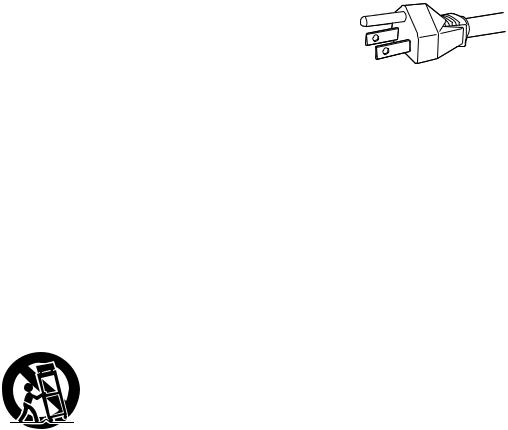
INPORTANT SAFETY
INSTRUCTIONS
READ BEFORE OPERATING EQUIPMENT
This product was designed and manufactured to meet strict quality and safety standards. There are, however, some installation and operation precautions which you should be particularly aware of.
1.Read Instructions — All the safety and operating instructions should be read before the appliance is operated.
2.Retain Instructions — The safety and operating instructions should be retained for future reference.
3.Heed Warnings — All warnings on the appliance and in the operating instructions should be adhered to.
4.Follow Instructions — All operating and use instructions should be followed.
5.Water and Moisture — The appliance should not be used near water — for example, near a bathtub, wash-bowl, kitchen sink, laundry tub, in a wet basement, or near a swimming pool, etc.
6.Carts and Stands — The appliance should be used only with a cart or stand that is recommended by the manufacturer.
7.An appliance and cart combination should be moved with care. Quick stops, excessive force, and uneven surfaces may cause the appliance and cart combination to overturn.
8.Wall or Ceiling Mounting — The appliance should be mounted to a wall or ceiling only as recommended by the manufacturer.
9.Ventilation — The appliance should be situated so that its location or position does not interfere with its proper ventilation. For example, the appliance should not be situated on a bed, sofa, rug, or similar surface that may block the ventilation openings; or, placed in a built-in installation, such as a bookcase or cabinet that may impede the flow of air through the ventilation openings.
10.Heat — The appliance should be situated away from heat sources such as radiators, heat registers, stoves, or other appliances (including amplifiers) that produce heat.
11.Power Sources — The appliance should be connected to a power supply only of the type described in the operating instructions or as marked on the appliance.
12.Grounding or Polarization — The precautions that should be taken so that the grounding or polarization means of an appliance is not defeated.
AC POLARIZED PLUG
13.Power-Cord Protection — Power-supply cords should be routed so that they are not likely to be walked on or pinched by items placed upon or against them, paying particular attention to cords at plugs, convenience receptacles, and the point where they exit from the appliance.
14.Cleaning — The appliance should be cleaned only as recommended by the manufacturer.
15.Nonuse Periods — The power cord of the appliance should be unplugged from the outlet when left unused for a long period of time.
16.Object and Liquid Entry — Care should be taken so that objects do not fall and liquids are not spilled into the enclosure through openings.
17.Damage Requiring Service — The appliance should be serviced by qualified service personnel when:
A.The power-supply cord or the plug has been damaged; or
B.Objects have fallen, or liquid has spilled into the appliance; or
C.The appliance has been exposed to rain; or
D.The appliance does not appear to operate normally or exhibits a marked change in performance; or
E.The appliance has been dropped, or the enclosure damaged.
18.Servicing — The user should not attempt to service the appliance beyond that described in the operating instructions. All other servicing should be referred to qualified service personnel.

DEUTSCH PORTUGUES ESPANOL FRANCAIS ENGLISH
SVENSKA NEDERLANDS ITALINO
DANSK
CONTENTS |
|
Features ......................................................................................................................................................................... |
1 |
CD-TEXT ........................................................................................................................................................................ |
1 |
CD-RW Disc Playback ................................................................................................................................................... |
1 |
Preparation .................................................................................................................................................................... |
2 |
Name and Operation of Each Part .............................................................................................................................. |
3 |
Playing a CD .................................................................................................................................................................. |
7 |
Using the Pitch Controls .............................................................................................................................................. |
9 |
Using the A-B Repeat Function ................................................................................................................................. |
10 |
Playback Using the Program Function ..................................................................................................................... |
11 |
Playback Using the CUE Function ............................................................................................................................ |
12 |
Playback Modes .......................................................................................................................................................... |
14 |
Synchro Recording ..................................................................................................................................................... |
15 |
Using a Remote Control (Not Included) ................................................................................................................... |
15 |
CD-TEXT Information Display .................................................................................................................................... |
16 |
Using the Preset Menu ............................................................................................................................................... |
17 |
Using the Control Port (PMD331/PMD340 Only) ...................................................................................................... |
18 |
Fader Start ................................................................................................................................................................... |
19 |
Troubleshooting .......................................................................................................................................................... |
19 |
Specifications .............................................................................................................................................................. |
Ú |
Figures ......................................................................................................................................................................... |
Û |
Connection .................................................................................................................................................................. |
Ü |
External Dimensions .................................................................................................................................................. |
Ü |
SVENSKA NEDERLANDS ITALINO DEUTSCH PORTUGUES ESPANOL FRANCAIS ENGLISH
DANSK
11

DEUTSCH PORTUGUES ESPANOL FRANCAIS ENGLISH
SVENSKA NEDERLANDS ITALINO
DANSK
After you unpack the CD player, make sure that all of the following accessories are included:
-This guide
-Power cord
-Stereo audio cable with RCA pins
Features
- Supports CD-TEXT
CD TEXT
Look for these symbols on CDs that support CD-TEXT.
-Supports playback of CD-RW (rewritable) discs
-Supports synchronized operation with other Marantz components that support RC5 codes.
-Pitch control +/–12% max., 0.1% steps
-Equipped with the latest Philips pickup mechanisms Model PMD330 (high-performance mechanism) Model PMD331 (high-performance mechanism)
Model PMD340 (high-performance, high-durability mechanism)
-Can be installed in standard 19-inch rack (2U)
-Shockproof (PMD331/PMD340) 10 seconds
-Supports instant start (PMD331/PMD340)
-Pitch bend control +/– 8% (PMD331/PMD340)
CD-TEXT
A CD-TEXT disc is a new type of music CD that includes, in addition to the music found on a conventional CD, text data containing the artist’s name, the album name, track names, etc. This text data is recorded in an area that was unused on music CDs. Accordingly, a CD-TEXT disc can be played on any conventional CD player, but the text data can be viewed only if the disc is played on a player that supports the CD-TEXT function, such as the PMD330/331/340.
The player determines automatically whether the current disc is a conventional CD or a CD-TEXT disc.
This player can display the album name, track name, the artist’s name, the songwriter’s name, the composer’s name, and the arranger’s name, as long as that information is recorded on the disc. Not all of this information will be present on every disc.
For details on how CD-TEXT is displayed, refer to the description of operation found later in this guide.
-This player can display 12 characters of text at one time. If the text data is longer than 12 characters, the text will scroll across the display from right to left.
-Some CD-TEXT discs include the called “highlights”. This CD player does not support the Highlight Scan function to play the highlights in sequence.
-The following languages can be displayed as CD-TEXT: English, French, Spanish, and German.
CD-RW Disc Playback
In addition to conventional music CDs and CD-R discs, this CD player can also play CD-RW discs.
-In order to play a CD-R or CD-RW disc, the TOC* must be recorded properly.
The process of writing the TOC information to the disc is called “finalizing,” and if this task was not completed properly, the disc cannot be played back because it will not be recognized properly as a music CD by a regular CD player.
For details, refer to the instruction manual provided with the CD recorder.
-This CD player can only play discs that were recorded in the CD-DA format. Never attempt to “play” a CD-ROM or similar disc containing computer data.
-When playing a CD-RW disc, it sometimes takes longer to read the TOC compared with a music CD or a CD-R disc.
-This CD player may not be able to play some CD-RW discs properly, depending on the conditions under which the disc was recorded.
* “TOC” stands for “Table of Contents,” and contains information such as the number of tracks on a disc and the total playback time.
SVENSKA NEDERLANDS ITALINO DEUTSCH PORTUGUES ESPANOL FRANCAIS ENGLISH
DANSK
1
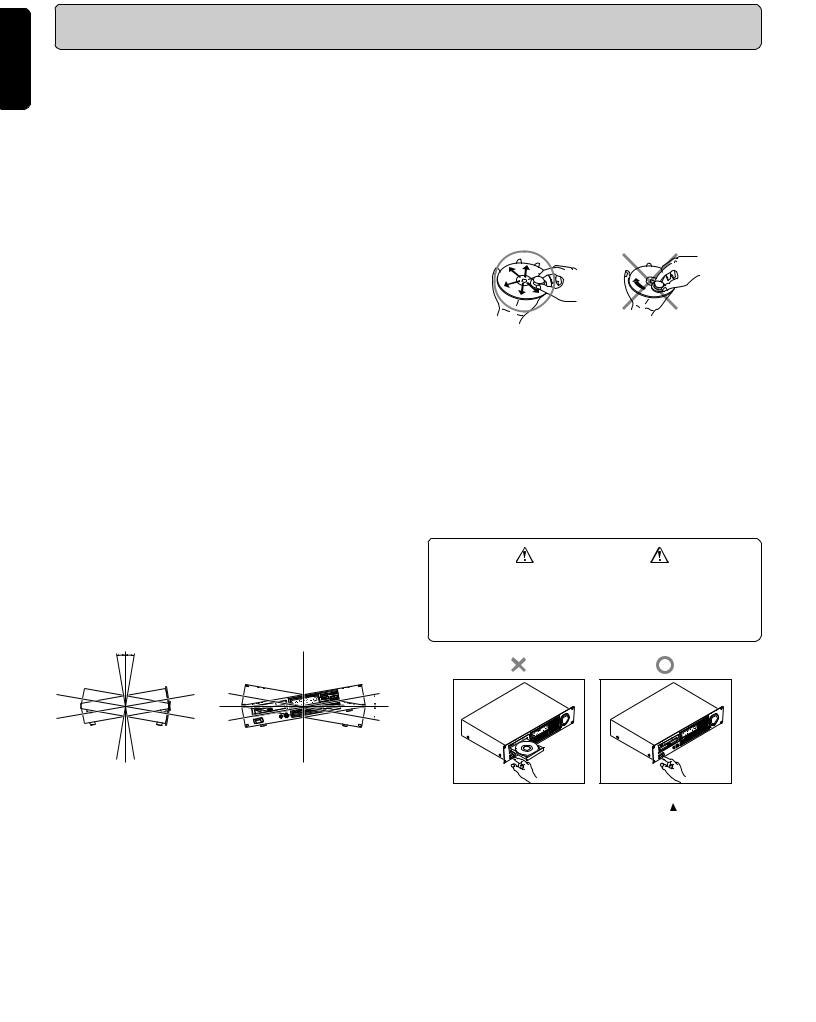
DEUTSCH PORTUGUES ESPANOL FRANCAIS ENGLISH
SVENSKA NEDERLANDS ITALINO
DANSK
Preparation
Introduction
Thank you for purchasing the Marantz PMD330/PMD331/ PMD340 Compact Disc Player.
Please read these operating instructions carefully. We recommend you read the entire user guide before you attempt to connect or operate this player.
The callout numbers indicated on the drawing in the end of this manual correspond to the same numbers in the text.
Precautions
The following precautions should be taken when operating the equipment.
General precautions
-When installing the equipment, ensure the following points:
•do not expose to excessive heat, cold, moisture or dust.
•do not expose to direct sunlight.
•do not expose to electrostatic discharges.
•never place heavy objects on the equipment.
do not pull out the AC cord by pulling on the cord; grasp the plug.
-Contact the nearest dealer or customer service if problems occur.
Cautions of Installation
-Install the player horizontally (or within 10 degrees of level). Too much inclination may result in damage to the player.
-Secure the player at four parts when installing it in a 19-inch rack. (See also Figure 3)
10°10°
 10°
10°
 10°
10°
Compact Discs
-Handle discs carefully and do not damage or scratch the data side.
-To protect the disc, avoid placing it in the following locations:
•in direct sunlight or near a source of heat.
•in a damp or dirty place.
•in a place which could be exposed to rain or near a window.
-Keep the disc surface clean.
•When cleaning the disc surface, use compact disc cleaner and wipe as shown below.
Wipe in a radial |
Do not wipe in circum- |
direction. |
ferential direction. |
•do not use conventional record cleaner.
•store discs properly by placing them in the disc cases.
Before Turning Off the Power
-Make sure to close the disc tray by pressing the OPEN/ CLOSE button before turning off the power.
WARNING
•Do not use force to open or close the disc tray during power
off. Force may result in damage to the tray.
•Place nothing but a compact disc in the tray. Inserting objects other than discs in the tray may result in damage to the tray.
Do not turn off the power |
Press the |
|
button to |
while the disc tray is |
close the disc tray before |
||
open. |
turning the power off. |
||
SVENSKA NEDERLANDS ITALINO DEUTSCH PORTUGUES ESPANOL FRANCAIS ENGLISH
DANSK
2
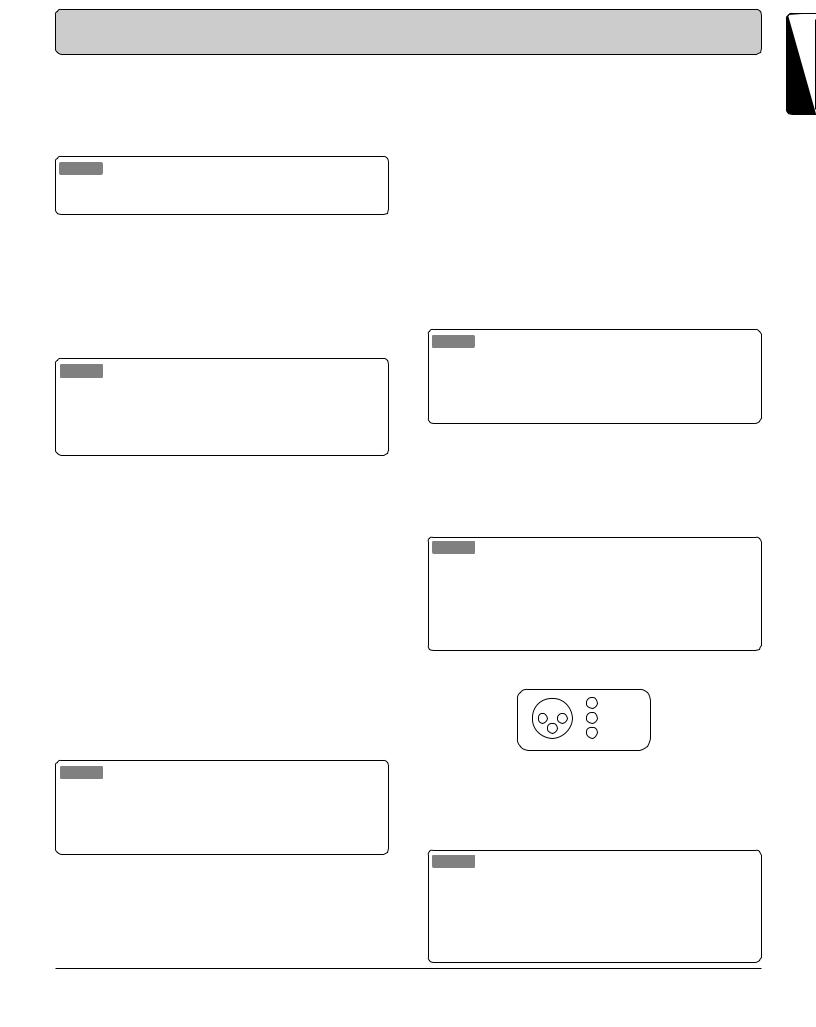
DEUTSCH PORTUGUES ESPANOL FRANCAIS ENGLISH
SVENSKA NEDERLANDS ITALINO
DANSK
Name and Operation of Each Part *
z ANALOG OUTPUT
(Analog output jacks)
These are the analog signal output jacks. The red jack is the right channel audio output, and the white jack is the left channel audio output jack.
Caution
Do not connect these jacks to the PHONO jacks on an amplifier.
x DIGITAL OUTPUT (SPDIF)
(Digital output jack)
The digital signal from the compact disc that is being played is output through this jack.
Connect a device with a digital input jack (such as recording equipment, an amp, or a D/A converter) to this jack through a RCA cable.
Note:
When outputting a digital signal from the PMD331/PMD340, set “D.OUT” in the Preset menu to “On”.
For details on how to make this setting. (See also page 17.)
c FADER START
(Fader start input jack)
An external switch connected to this jack can be used to control disc pause and playback.
(See also page 19.)
On the PMD331/PMD340, this feature is in the CONTROL I/O connector Ú0.
(See also page18.)
v REMOTE INT/EXT
(RC5 remote control internal/external switch)
When using an infrared remote control transmitter to control this CD player, set this switch to “INT”. When incorporating this CD player into a system by connecting this CD player (for remote control) to equipment that is equipped with a RC5 compatible output, set this switch to “EXT”.
Note:
Please set to “EXT” when you are using this CD player without a remote control. The CD player will then not be able to receive signals from another infrared remote control transmitter.
b REMOTE RC5 IN/OUT
(RC5 remote control input/output jack)
This CD player can be controlled remotely by connecting this CD player via a remote control cable to other equipment that support RC5.
-If this CD player is to be connected to equipment that is equipped with a RC5 remote control jack, be certain to connect the “REMOTE CONTROL IN” jack on this unit with the
“REMOTE CONTROL OUT” jack on the other unit.
-When this CD player is connected to a cassette recorder or a disc recorder (CD-R, CD-RW, etc.), RC5 provides synchro re cording capabilities. (See also page 15.)
nANALOG BALANCED OUTPUT LEVEL
(Analog balanced output level adjustment)
(PMD331/PMD340 only)
Use a Phillips type screwdriver to adjust the analog balanced output level. Turn the screwdriver clockwise to increase the output level, and turn the screwdriver counterclockwise to decrease the output level. (Min. level = -11 dBu)
Caution
-Do not use excessive force when turning the screwdriver.
-The output level and channel balance are adjusted when the unit is shipped from the factory. Do not change these adjustments inadvertently.
m ANALOG BALANCED OUTPUT
(Analog balanced output jacks)
(PMD331/PMD340 only)
Connect a device with analog balanced inputs to these jacks through a cable with XLR connectors.
Note:
When connecting another device to this CD player through these jacks, confirm that the pin assignments of the XLR connectors match before making the connection.
If the pin assignments are different, change the connections in the XLR connector cable so that the pin assignments match.
XLR Connector Pin Assignments for this CD Player
|
1 GND |
1 2 |
2 HOT(+) |
33 COLD(-)
,DIGITAL OUTPUT (SPDIF)
(Digital balanced output jack) (PMD331/PMD340 only)
Connect a device with a digital balanced input to this jack through a cable with XLR connectors.
Note:
The digital format output on this balanced connectors is SPDIF. Most products that contain an XLR digital input are designed to accept an AES/EBU format signal. Be aware that the AES/ EBU input on some products will not accept SPDIF, even though the audio data is identical.
*Refer to the figures on the pages at the back of this user’s guide. The callout numbers on the figures correspond to those found in the text.
SVENSKA NEDERLANDS ITALINO DEUTSCH PORTUGUES ESPANOL FRANCAIS ENGLISH
DANSK
3

DEUTSCH PORTUGUES ESPANOL FRANCAIS ENGLISH
SVENSKA NEDERLANDS ITALINO
DANSK
Name and Operation of Each Part
. DIGITAL OUTPUT (SPDIF)
(Optical digital output jack)
(PMD331/PMD340 only)
The digital signal from the compact disc that is being played is output through this jack.
Connect a device with an optical digital input jack (such as recording equipment, an amp, or a D/A converter) to this jack through an optical cable.
Notes:
-Be careful not to bend the optical fiber cable.
-Be sure to attach the connector caps when the OPTICAL connectors are not used.
Ú0CONTROL I/O
(Control I/O jack)
(PMD331/PMD340 only)
This is the remote control input/output connector.
(See also page 18.)
Ú1POWER CONNECTOR
Connect the power cord to this connector and connect the other end of the power cord to an AC outlet.
q POWER (Power button)
Press this button once to turn the power on; press it again to turn the power off.
w DISC TRAY
This is the disc tray on which the CD is placed. Press the  button y to open and close the disc tray.
button y to open and close the disc tray.
e HEADPHONE (Headphone output jack)
Plug headphones into this jack.
The headphone volume level can be adjusted by using the headphone level r control.
r LEVEL (Headphone volume level adjustment)
This knob is used to adjust the headphone volume level.
t LCD Display
This displays the playing time, various playback modes, etc.
y  (Disc tray open/close)
(Disc tray open/close)
Press this button to open the disc tray w.
Place a compact disc on the tray with the label facing up, and then press this button again to close the tray.
u TIME (Time display)
Press this button to cycle the display D through the following displays: track remaining time → track elapsed time → disc remaining time → disc elapsed time → total disc playing time → back to “track remaining time”, etc.
i TEXT (CD text display)
Press this button while a CD-TEXT disc is in the CD player to switch the character displayE from a time indicator display to a text display.
Subsequent presses of this button will toggle through the available CD-TEXT displays.
(See also page 16.)
o 0 to 9 (Numeric buttons)
These buttons are used to select tracks. When registering tracks for programmed playback, use these buttons to specify the tracks.
!0PRESET
Press this button to put the player in Preset Setting mode.
(See also page 17.)
!1PROG (Program)
Press this button to put the player in Program Registration mode.
(See also page 11.)
SVENSKA NEDERLANDS ITALINO DEUTSCH PORTUGUES ESPANOL FRANCAIS ENGLISH
DANSK
4
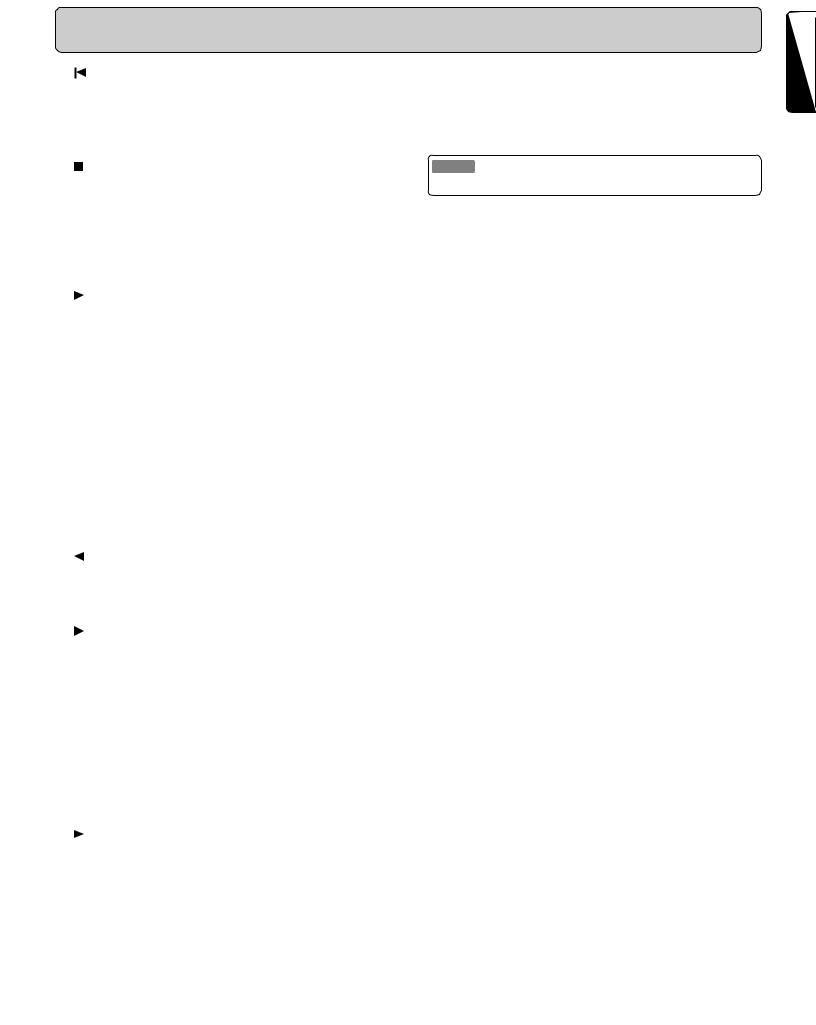
DEUTSCH PORTUGUES ESPANOL FRANCAIS ENGLISH
SVENSKA NEDERLANDS ITALINO
DANSK
Name and Operation of Each Part
!2 (Track skip back)
(Track skip back)
Press this button while a CD is playing to send the player back to the beginning of the current track. Pressing this button more than once sends the player back that many tracks.
!3 / EXIT (Stop/Exit)
-This button has two functions: STOP and EXIT.
-Press this button to stop a CD that is currently playing.
-In Play Mode/Preset setting or Program entry mode, press this button to return to the normal mode.
-Press this button twice to clear a set CUE point.
!4 (Track skip forward)
(Track skip forward)
Press this button while a CD is playing to send the player ahead to the beginnig of the next track. Pressing this button more than once sends the player ahead that many tracks.
!5CUE/CLEAR
This button has two functions: CUE and CLEAR.
-Press this button to perform the cue operation.
(See also page 12.)
-In program entry mode, press this button to clear a programmed track.
-In Play Mode/Preset setting mode, press this button to cancel a change that has not been confirmed.
!6 (Fast reverse)
(Fast reverse)
When playing a CD, press this button to scan backwards quickly through the current track.
!7

 (Play/pause), ENTER
(Play/pause), ENTER
This button has three functions: PLAY, PAUSE, and ENTER.
-If playback is paused or when performing a search, press this button to begin playing the CD.
-If the CD is stopped, pressing this button causes the CD player to search for the first track and begin playing.
-If the CD is playing, pressing this button pauses playback. While a CD is paused, the 

 !7button flashes.
!7button flashes.
-In Play Mode/Preset setting or Program entry mode, press this button to save a change.
!8 (Fast forward)
(Fast forward)
When playing a CD, press this button to scan forwards quickly through the current track.
!9CONTRAST (LCD contrast)
This is used to adjust the LCD displayt contrast. Turning this control clockwise using a small screwdriver causes the display contrast to become stronger; turning this control counterclockwise causes the display to become fainter.
Caution
Do not use excessive force when turning the screwdriver.
@0PITCH/SEARCH (Pitch/Search dial)
(PMD331/PMD340 only)
While playing
Turn this dial in the clockwise direction to increase the pitch speed; turning this dial in the counterclockwise direction decreases the pitch speed. (maximum: +/–12%)
The position of the pitch control is indicated on the LCD display F.
While paused
To conduct a frame search in the forward direction, turn this dial clockwise; to conduct a frame search in the reverse direction, turn this dial counterclockwise.
@1INDEX –
Press this button to search for the previous index.
Each time the INDEX – button is pressed, the INDEX number that is displayed decreases by “1”.
@2MODE
Press this button to change or check the playback mode.
(See also page 14.)
@3END
-Press this button while playback is paused to monitor the end of the track. The monitor time can be set between 5 to 35 seconds through the Preset menu.
(See also page 17.)
-The END button lights while the End Monitor operation is in progress.
@4INDEX +
Press this button to search for the next index.
Each time the INDEX + button is pressed, the INDEX number that is displayed increases by “1”.
SVENSKA NEDERLANDS ITALINO DEUTSCH PORTUGUES ESPANOL FRANCAIS ENGLISH
DANSK
5
